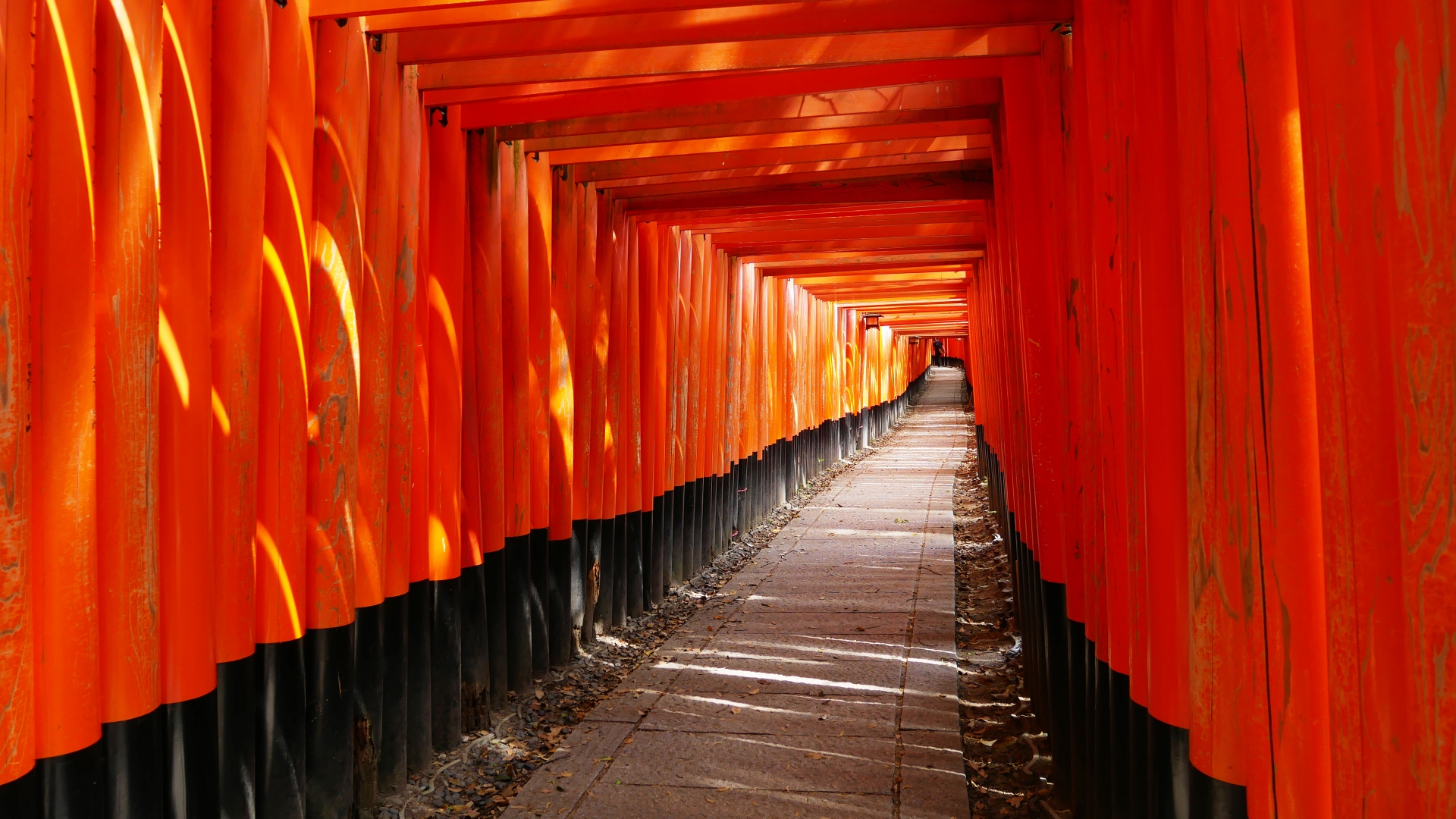SIGHTSEEING
Kiyomizu-dera Temple: A Journey Through the Four Seasons of Kyoto’s Iconic Landmark
2023.11.07
When one mentions Kiyomizu-dera, the mind conjures images of the temple’s protruding stage, “Kiyomizu’s Stage,” and the famous “Otowa Waterfall,” making it an undoubtedly classic Kyoto tourist spot known far and wide.
The Beauty of Changing Seasons

The charm of Kiyomizu-dera lies in its offering of Japan’s distinct seasonal beauty. From the main hall featuring the renowned “Kiyomizu’s Stage” and the three-story pagoda, to numerous historical buildings, they all harmoniously blend with the surrounding nature.
In spring, approximately 1,500 cherry trees, including Somei Yoshino and Yamazakura, burst into bloom. The sight of cherry blossoms encircling Kiyomizu’s Stage is so breathtaking that it will make you pause in admiration.

As the cherry blossom season ends, the lush greenery of summer offers the most stunning contrast against the blue sky. The cool shade under the trees and the sparkle of the waterfall’s waters in the sunlight are truly symbols of the verdant season.
Autumn transforms the precincts with vivid reds and yellows of maple and Japanese maple leaves, adding brilliance to the scenery. The essence of Kyoto’s old capital is most palpable during this season.
With winter comes snow, changing the landscape dramatically into a white, ethereal world. The scenery at Kiyomizu-dera, distinct with each season, compels one to return time and again.
Main Hall

Perched on the cliff of Mount Otowa, the “Main Hall” is an indispensable spot when visiting Kiyomizu-dera. Known for “Kiyomizu’s Stage,” this wooden structure is also designated as a National Treasure.
The most impressive “Stage” juts out from the main hall; it is about 13 meters high and covers an area of approximately 190 square meters, constructed with over 410 hinoki cypress boards. The view from here is a breathtaking panorama, offering an up-close experience of nature’s seasonal transformations.
Niōmon Gate

The first sight that greets visitors at Kiyomizu-dera is the “Niōmon Gate,” the temple’s main gate, also known as the “Red Gate” due to its vivid vermillion color. This important cultural property is said to have been constructed to prevent commoners from looking down upon the Imperial Palace from the main hall.
Thousand Stone Buddhas

On the central west side of the precincts, opposite “Seiju-in,” lies the impressive “Thousand Stone Buddhas” area, where over a thousand stone Buddha statues line up against the mountain backdrop.
Jokoro Tower

The “Jokoro Tower,” approximately 15 meters tall and a designated important cultural property, is known for housing the child-safe Kannon (Thousand-Armed Kannon), said to bestow the benefits of safe childbirth. It has long been a place of worship for women seeking blessings for a safe delivery.
Three-Story Pagoda

The brightly colored “Three-Story Pagoda” stands out against the blue sky and is symbolic of Kiyomizu-dera. Recognized as an important cultural property of the country, it is one of the tallest of its kind in Japan, standing about 31 meters high, visible even from Kyoto’s city center.
Otowa Waterfall

Another famous spot in Kiyomizu-dera is the “Otowa Waterfall.” The waterfall splits into three separate streams, each believed to confer longevity, success in love, and success in studies. Visitors often partake in the tradition of drinking from one stream, hoping to have their wishes granted. However, be cautious—drinking from more than one is said to diminish the blessing.
Jishu Shrine

Known as one of Kyoto’s oldest spots for romance and luck, “Jishu Shrine” is located on the north side of the main hall within the Kiyomizu-dera complex yet stands as an independent shrine. In front of the main hall is the “Love-Fortune Telling Stones,” a popular spot where it is said that if you can walk from one stone to another with your eyes closed and reach it successfully, your love wish will come true.
Access
– From JR Kyoto Station: Take a city bus to “Gojo-zaka,” then a 10-minute walk.
– From Keihan Railway “Kiyomizu-Gojo Station”: Approximately a 25-minute walk.
Regular Holidays: Open year-round
Admission Fees: Adults 400 yen, Elementary & Middle School Students 200 yen
Official Website: [https://www.kiyomizudera.or.jp/]
Related article
-

SIGHTSEEING
Canal City Hakata: Fukuoka’s Premier Shopping and Entertainment Complex
2023.11.07
-

SIGHTSEEING
Explore the Wonders of the Sea at Fukuoka’s Marine World Uminonakamichi
2023.11.11
-

SIGHTSEEING
Autumn Splendor at Eikandō: Kyoto’s Premier Fall Foliage Destination
2023.10.20
-

SIGHTSEEING
Dazaifu Tenmangu Shrine: A Journey of Learning, Sincerity, and Warding Off Evil
2023.11.08
-

SIGHTSEEING
Journey to the Heart of Kyoto: An In-depth Exploration of Fushimi Inari Taisha
2023.10.17




